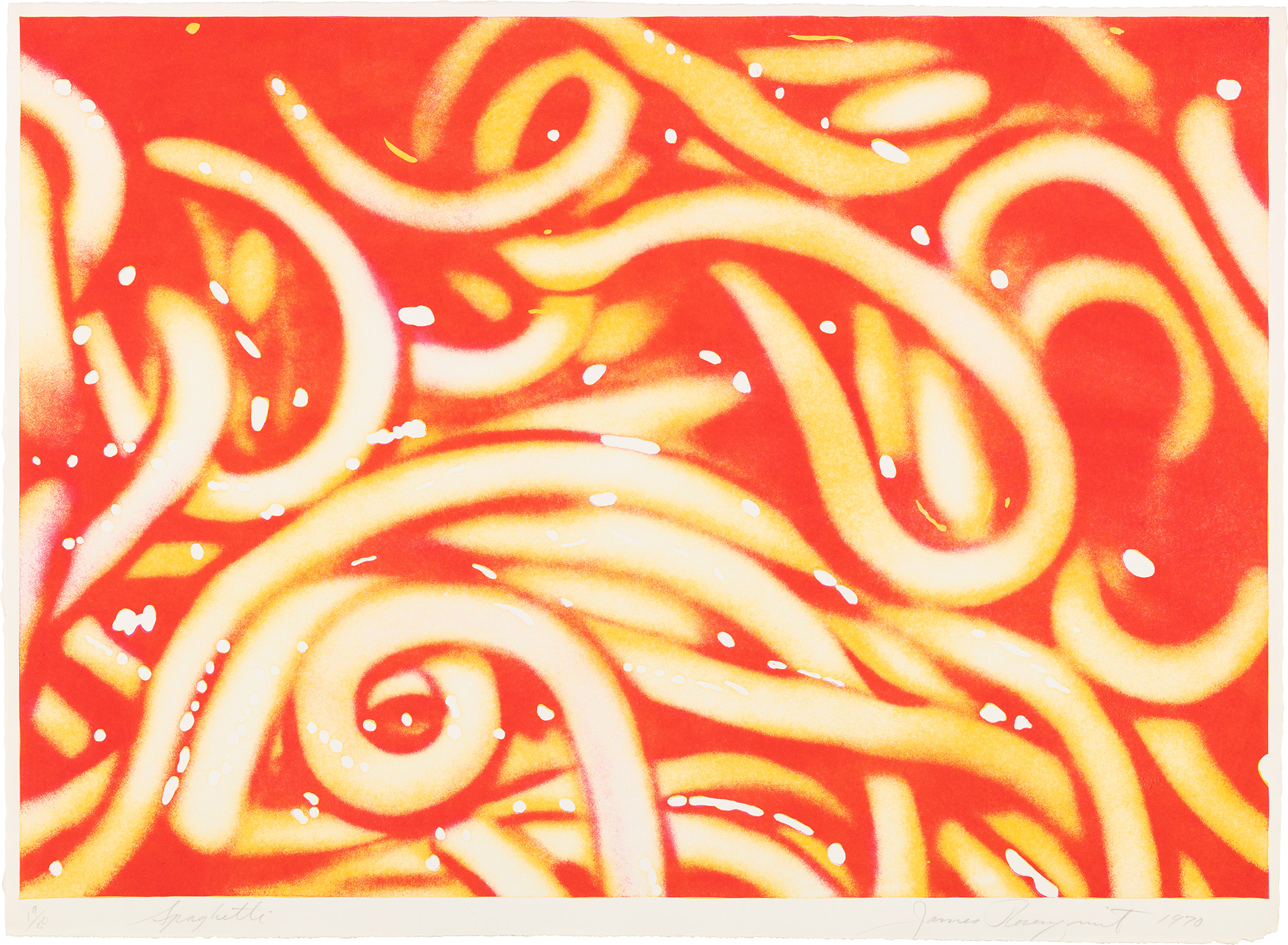

211
James Rosenquist
Spaghetti (G. 31)
1970
Lithograph in colors, on Copperplate Deluxe paper, with full margins.
I. 29 1/8 x 41 1/4 in. (74 x 104.8 cm)
S. 30 7/8 x 42 in. (78.4 x 106.7 cm)
S. 30 7/8 x 42 in. (78.4 x 106.7 cm)
Signed, titled, dated and numbered 19/50 in pencil (there were also 10 artist's proofs), co-published by Castelli Graphics and Hollanders Workshop, New York (with the Hollanders Workshop blindstamp), framed.